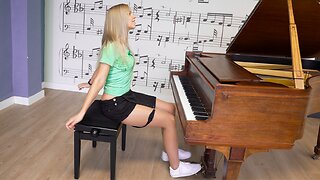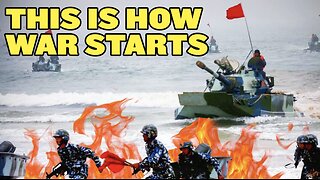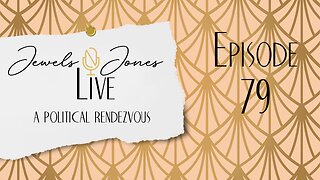Tai Chi Push and Pluck Technique and Trigram Examination
In this video I discuss details of Tai Chi waist rotation and hip power to in the 13 Postures. I focus on the Postures of Push and Pluck in this video, providing my personal analysis of the relationship between the Tai Chi Trigrams and the anatomy of the waist and the hips. There is no accepted anatomical correlation between the Trigrams and the 13 Postures, but I believe there is a way to correlate them. In this series of videos I will go through each of the 13 Postures and their corresponding Trigrams and show you the relationship that I have clearly found between them and the anatomy of the core. I believe having an anatomical basis for understanding Tai Chi movements can help with your Tai Chi practice and help you translate Tai Chi movement into normal daily activities like walking, running, climbing stairs, and more. I have been teaching walking technique on YouTube for almost 8 years, and I have used my analysis of the Trigrams to develop the Walking Code. I have put out a small number of videos directly related to the anatomy of the Trigrams which have gone largely unnoticed and/or completely ignored. It could be that my analysis is incorrect, but I am very doubtful of that since my analysis correlates with all of the trigrams and with all of the movements in the Tai Chi forms, which I cannot imagine being coincidental. I am not a Tai Chi instructor, but I have 27 years training, teaching, and performing Argentine Tango. The core movements in Tai Chi and in Tango happen to correlate perfectly. I was able to use my Trigram analysis to perfect my tango movement, and this also helped to confirm the functionality of the analysis. I will give a brief description of the analysis here and in the video I demonstrate how the core movement patterns translate to the energies of Pluck and Push.
Core Pattern Analysis.
Trigrams: Each trigram represents three elements of the core.
The upper our outside line represents power from the hips, either flexion or extension. Hip extension is a solid YANG line. Hip flexion power is represented by a broken Yin line. This is because if you turn into a flexing hip.
The middle line represents contralateral rotation of the upper waist, primarily from the external obliques and supporting muscles. These muses turn the upper torso toward the opposite side of the body. Turning the upper waist into an extending hip is a Yang movement because the rotation is essentially bounced off the extending hip, causing and outward projection of energy. On the other hand, if you turn into a flexing hip, the body rotation will be accepted into the flexing hip rather than being projected off of it. This is a Yin energy.
The lower line represent rotation of the lower waist, from the lower abdominal (namely the internal obliques and supporting rotator muscles. These muscles create ipsilateral rotation, turning the lumbar spine and pelvis toward the side of the active muscle action. Yin and Yang work the same for the lower abs as for the upper abs. Turning into an extending hip in Yang and turning into a flexing hip is Yin.
Further detail of Yin and Yang:
Turning the waist toward and extending hip is Yang. Turning the waist away from an extending hip is Yin.
Turning the waist toward a flexing hip is Yin. Turning the waist away from and extending hip is Yang.
Ward Off: Three yang lines, indicating hip extension with the upper and lower waist turning into the extending hip, thus projecting off of it, resulting in and energy which cannot be penetrated. The structure of the core is what supports the arm expansion. This is used in Ward Off. When we run, we use this same energy (after a Push) to propel the body off the ground.
________
________
________
Roll Back: Three broken lines, indicate a flexing hip and the upper and lower waist turn into the flexing hip.
____ ____
____ ____
____ ____
Push: Push has a top line representing hip extension. The upper waist turns away from the extending hip while the lower waist turns toward the extending hip. This causes a pushing action from the hand on the side of the extending hip. It is used in Grasp the Sparrow's Tail with both arms pushing, but the waist rotation is on the side of the extending hip. This movement is used throwing the Cross in Kick boxing. In walking it is the push down of the swing leg when we go down stairs or the push up of the standing leg when going up stairs. Push always proceeds Ward Off in getting the body off the ground when running.
_________
____ ____
_________
Pluck: Pluck has the top line representing hip extension. The waist rotation is reversed when compared to Push. The middle line is Yang because the upper waist turns toward the extending hip. The lower line is Yin because the lower waist turns away from the extending hip. This can be clearly seen in the video in Single Whip. The same energy creates the Jab in kickboxing, punching with the arm opposite the extending hip.
_________
_________
____ ____
-
 1:11
1:11
Gamazda
11 hours agoFlight of the Bumblebee - Rimsky-Korsakov
20K38 -
 1:00:21
1:00:21
MYLUNCHBREAK CHANNEL PAGE
11 hours agoA Little Season in New York City
25.5K74 -
 11:56
11:56
China Uncensored
13 hours agoThe Philippines Threaten War with China
26.2K19 -
 33:00
33:00
Degenerate Jay
17 hours agoThe James Bond Games Have Been Lost To Time
13.6K9 -
 29:11
29:11
The Why Files
1 day agoMystery in Cisco Grove: Don Shrum’s Encounter with UFOs, Aliens and Robots
31.2K24 -
 2:26:44
2:26:44
Mally_Mouse
9 hours agoLet's Play -- Crowd Control Minecraft
32.8K4 -
 2:19:18
2:19:18
The Quartering
14 hours agoTrump Mistrial Bombshell, RNC Plans For Trump In Jail & Maybe Some Video Games
69.1K142 -
 3:10:32
3:10:32
SNEAKO
15 hours agoIs Trump a Criminal?
110K104 -
 2:22:40
2:22:40
Jewels Jones Live ®
1 day agoTHE ART OF LAWFARE | A Political Rendezvous - Ep. 79
73.2K32 -
 25:30
25:30
Stephen Gardner
1 day ago🔴BREAKING: Trump MISTRIAL details | George Clooney's Netanyahu SECRET LEAKS!!
87.2K452